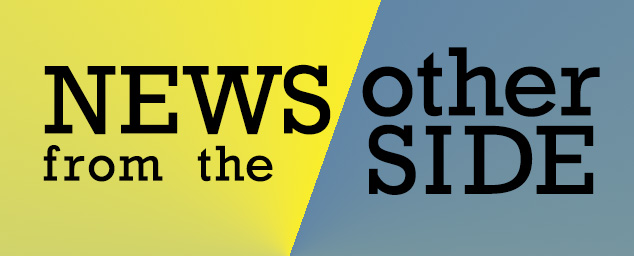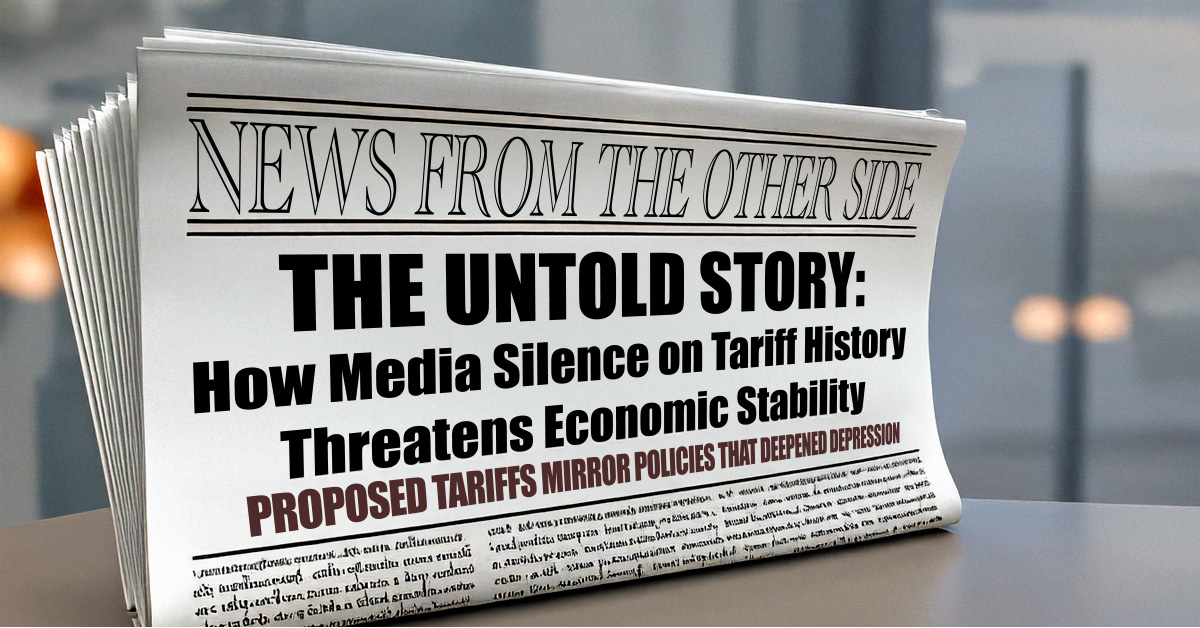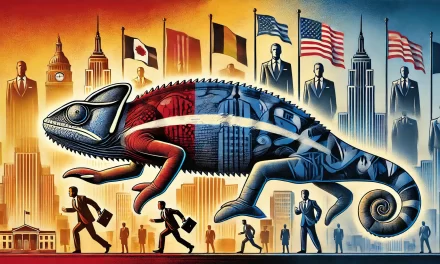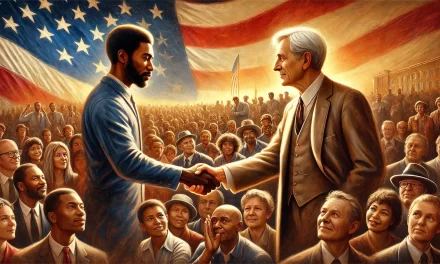by News from the Other Side
In an era where information flows ceaselessly through our devices, a deafening silence has fallen over one of the most critical economic discussions of our time. As aggressive tariff policies are proposed and implemented, mainstream media outlets have largely failed to connect these measures to their catastrophic historical precedents—most notably, the Smoot-Hawley Tariff Act of 1930, which helped plunge America deeper into the Great Depression.
The Buried Truth
Let’s be brutally clear: We have run this experiment before, and the results were devastating. The Smoot-Hawley tariffs, signed into law by President Hoover despite warnings from over 1,000 economists, triggered immediate retaliatory measures from America’s trading partners. International trade collapsed by roughly 66% between 1929 and 1934. Unemployment soared to 25%. The economic pain became generational trauma.
This isn’t obscure history. It’s Economics 101. Yet where are the front-page headlines warning
“PROPOSED TARIFFS MIRROR POLICIES THAT DEEPENED DEPRESSION”?
Where are the primetime specials examining the direct parallels between the 1930s economic disaster and today’s proposals?
A Catastrophic Failure of Journalistic Responsibility
The media’s reluctance to forcefully contextualize current tariff proposals within their historical framework represents nothing less than a dereliction of duty. When a policy approach has previously contributed to bread lines, farm foreclosures, and economic devastation, that context isn’t a partisan position – it’s essential information the public deserves to know.
Instead, tariff debates are often framed as just another political disagreement, with economists’ warnings buried in paragraph twelve of articles that focus primarily on political strategy. This false equivalence between established economic history and political talking points doesn’t serve the public – it endangers them.
Why the Silence?
What explains this conspicuous gap in coverage? Several factors appear at play:
- Economic illiteracy in newsrooms has led to a dangerous comfort with presenting economically questionable claims without immediate historical context.
- Fear of appearing partisan has paralyzed media organizations, causing them to retreat to a faux neutrality that gives equal weight to established economic principles and political rhetoric.
- The complexity barrier means connecting historical economic events to current policy requires explaining nuanced concepts that don’t fit neatly into sound bites.
- Access journalism incentivizes reporters to maintain relationships with political figures rather than consistently challenging their economic claims.
The Cost of Silence
This silence comes with profound consequences. When voters lack clear information about the historical precedents for economic policies, they cannot make informed decisions. When political leaders aren’t consistently confronted with the historical record of similar policies, they face insufficient pressure to justify their departures from established economic understanding.
Most critically, when media outlets fail to sound the alarm about policies that previously contributed to economic collapse, they become unwitting accomplices to potential economic harm. The Smoot-Hawley tariffs didn’t simply cause temporary discomfort – they devastated lives, destroyed livelihoods, and deepened a national crisis into a catastrophe.
A Call for Journalistic Courage
What’s needed now is nothing less than a fundamental reassessment of how economic history is presented in mainstream coverage. Every article discussing tariff proposals should prominently include the historical context of previous tariff regimes. Every interview with proponents should include direct questions about how their approaches differ from failed historical precedents.
The public deserves to see headlines that connect tariff proposals to their historical outcomes. They deserve graphics that visualize what happened when similar policies were implemented. They deserve reporters who refuse to treat established economic history as just another opinion.
Conclusion
The stakes could not be higher. Economic policies based on flawed understandings of how tariffs actually function threaten to repeat some of the darkest chapters of American economic history.
The media’s failure to consistently and prominently provide this critical historical context isn’t just a journalistic oversight – it’s a betrayal of the public trust.
When policies that once contributed to economic depression are proposed again, that historical connection shouldn’t be a footnote – it should be the headline. The time for equivocation and muted criticism is long past. What’s needed now is the journalistic courage to state plainly what history has already taught us, before we’re forced to learn those painful lessons again.
News from the Other Side – Truth Matters






Recent Comments